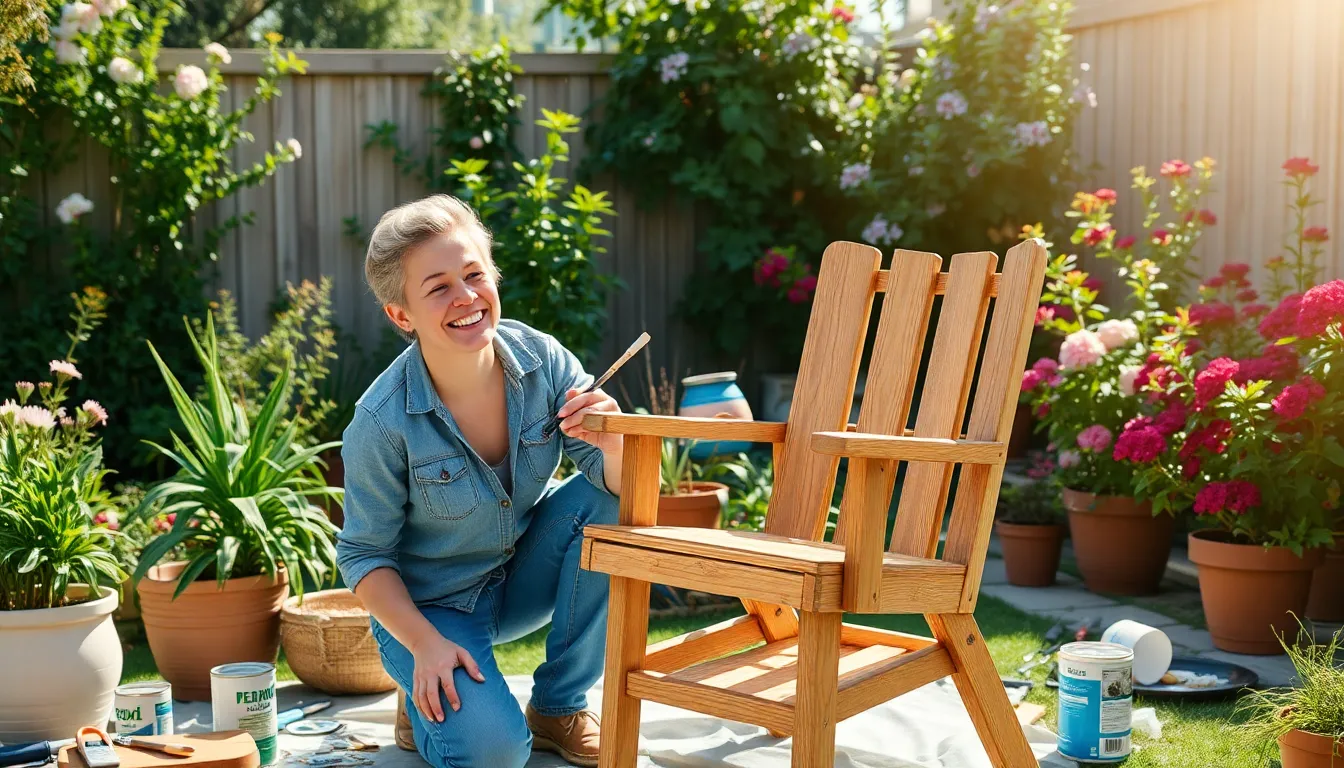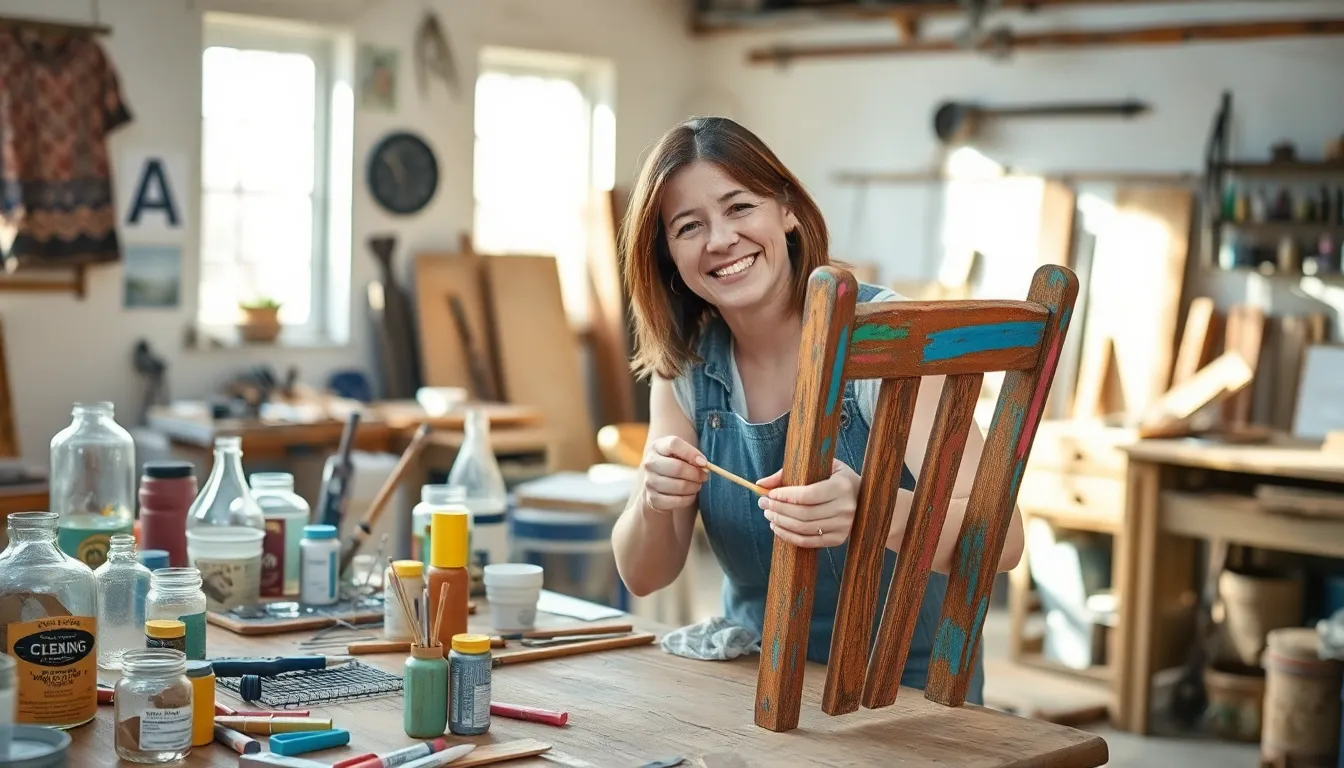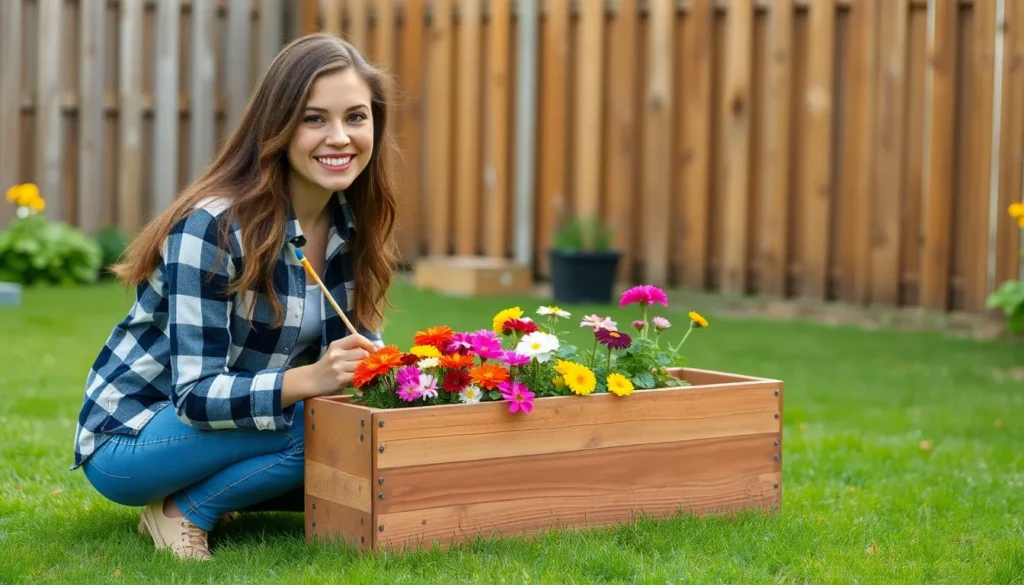In a world increasingly focused on sustainability, upcycling projects have emerged as a creative solution to reduce waste while giving old items a new life. It’s not just about recycling; it’s about transforming discarded materials into something functional and beautiful. From furniture to fashion, the possibilities are endless, inviting anyone to unleash their creativity.
Embracing upcycling not only benefits the environment but also adds a unique touch to personal spaces. By turning everyday items into artful creations, individuals can express their style and make a positive impact. Whether you’re a seasoned DIY enthusiast or a curious beginner, exploring upcycling can be a rewarding journey that inspires innovation and resourcefulness.
Table of Contents
ToggleOverview Of Upcycling Projects
Upcycling projects involve converting waste materials or unwanted products into new items with higher value or purpose. These projects serve various benefits, including reducing landfill waste and minimizing resource consumption. Creative individuals utilize materials like wood, fabric, glass, and plastic to craft unique items, preserving resources while expressing personal style.
Common Upcycling Materials
- Wood: Old furniture, pallets, and crates can become shelves, planters, or decor.
- Fabric: Worn-out clothing or textiles can transform into quilts, bags, or decorative pillows.
- Glass: Jars and bottles serve as candle holders, vases, or organizers.
- Plastic: Single-use containers can turn into planters, art pieces, or storage solutions.
Popular Upcycling Projects
- Furniture Revival: Sanding and painting vibrant colors can revive tired furniture, extending its lifespan.
- Planters: Turning tin cans or wooden boxes into planters enhances garden aesthetics while reusing materials.
- Art Installations: Shattered mirrors or scrap metal can become striking wall art or sculptures.
- Home Décor: Repurposing old frames or fabric into wall hangings or collage displays adds character to spaces.
Environmental Benefits
- Waste Reduction: Upcycling decreases the volume of waste in landfills, promoting a circular economy.
- Resource Conservation: It minimizes the need for new materials, reducing environmental impact associated with production.
- Carbon Footprint: By reusing items, it lowers greenhouse gas emissions linked to production and transportation.
Upcycling not only fosters creativity but also encourages sustainable living. Various projects cater to all skill levels, making it accessible for anyone to join the movement while positively impacting the environment.
Benefits Of Upcycling Projects

Upcycling projects yield significant benefits, both environmentally and economically. These advantages contribute to sustainable living and resource conservation.
Environmental Impact
Upcycling significantly reduces landfill waste by diverting materials from disposal. When individuals transform old items, they decrease the demand for new products, thus conserving natural resources. According to the U.S. Environmental Protection Agency, recycling and composting prevented the release of approximately 186 million metric tons of carbon dioxide equivalent into the air in 2018. Upcycling also minimizes energy consumption, as repurposing materials typically requires less energy than producing new goods. This practice contributes to a lower carbon footprint and promotes a healthier planet.
Economic Advantages
Upcycling creates economic benefits by reducing costs associated with buying new items. Individuals can save money by repurposing materials they already own rather than purchasing new goods. For instance, transforming old furniture into trendy pieces can enhance home aesthetics without substantial investment. Additionally, upcycled products often carry higher value in niche markets, allowing crafters and DIYers to sell their creations for profit. This practice not only fosters creativity but also supports local economies by encouraging small businesses focused on eco-friendly products.
Popular Upcycling Projects Ideas
Exploring popular upcycling project ideas offers inspiration for anyone looking to enhance creativity while promoting sustainability. From furniture transformations to clothing revamps, these projects provide functional and stylish alternatives to disposal.
Furniture Transformations
Transforming furniture presents an opportunity to breathe new life into old pieces.
- Refurbishing chairs can involve repainting or reupholstering to match modern aesthetics.
- Modifying tables through the addition of unique finishes, such as stained wood or decorative decoupage, enhances visual appeal.
- Crafting storage solutions from wooden pallets or crates provides both functional and stylish options, perfect for organizing spaces.
Clothing Revamps
Revamping clothing allows individuals to express their style while reducing textile waste.
- Alterations can include shortening hemlines or adding embellishments, giving garments a fresh look.
- Turning old jeans into bags creates functional accessories while minimizing waste.
- Upcycling t-shirts into quilts repurposes fabric from well-loved shirts into cozy keepsakes.
Home Decor Innovations
Innovative home decor projects elevate personal spaces by integrating recycled materials.
- Creating planters from glass jars adds a unique touch to home gardens while recycling materials.
- Designing wall art from scrap wood offers a rustic charm, perfect for enhancing interior spaces.
- Constructing candle holders using wine bottles provides an elegant solution for decorative lighting.
These projects highlight the versatility of upcycling, demonstrating that waste can transform into valuable, stylish items.
Tips For Successful Upcycling
Successful upcycling requires thoughtful planning and the right approach. These tips can enhance the upcycling experience and lead to impressive results.
Choosing The Right Materials
Choosing suitable materials is crucial for successful upcycling projects.
- Wood: Opt for reclaimed wood, pallets, or furniture destined for disposal. Sturdy wood offers durability for furniture and decor.
- Fabric: Look for old clothing, linens, or curtains. Natural fibers like cotton and linen work well for sewing or repurposing into new items.
- Glass: Gather empty jars, bottles, or broken glassware. Glass can become stylish storage or unique decor pieces once transformed.
- Plastic: Collect plastic containers from food or household products. These can turn into planters, organizers, or art projects.
- Metal: Utilize old tools, cans, or furniture. Metal items can serve as decorative accents or functional pieces when creatively modified.
Essential Tools And Techniques
Utilizing the right tools and techniques streamlines the upcycling process.
- Basic tools: Invest in essential tools like scissors, a utility knife, a screwdriver, and a hammer for various projects.
- Sewing machine: A sewing machine provides ease for fabric-based projects. It allows for precise stitching and faster assembly.
- Power tools: Use power drills, saws, and sanders for wood projects. These tools enhance accuracy and efficiency in creating larger items.
- Adhesives: Choose strong adhesives suited for different materials, such as wood glue for wood and epoxy for glass or metal.
- Finishing techniques: Apply paint, stain, or varnish for a polished look. Finishing techniques improve aesthetics and increase durability.
Incorporating these tips ensures upcycling projects are both enjoyable and productive, resulting in creative solutions that contribute to sustainability.
Upcycling stands as a powerful tool for individuals looking to make a positive impact on both their lives and the environment. By embracing this creative practice, anyone can transform everyday waste into unique and valuable items. The benefits extend beyond aesthetics and personal expression to include significant environmental and economic advantages.
As more people explore upcycling, they contribute to a culture of sustainability that values resource conservation and innovative thinking. Whether it’s revamping furniture or creating home décor, the possibilities are endless. This movement not only inspires creativity but also fosters a sense of community among those who share a passion for sustainable living.





